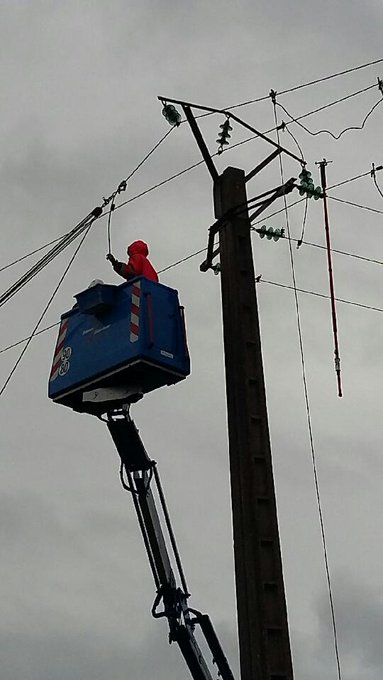While the potential of wind and solar energy is more than sufficient to supply the electricity demand of industrial societies, these resources are only available intermittently. To ensure that supply always meets demand, a renewable power grid needs an oversized power generation and transmission capacity of up to ten times the peak demand. It also requires a balancing capacity of fossil fuel power plants, or its equivalent in energy storage.
Consequently, matching supply to demand at all times makes renewable power production a complex, slow, expensive and unsustainable undertaking. Yet, if we would adjust energy demand to the variable supply of solar and wind energy, a renewable power grid could be much more advantageous. Using wind and solar energy only when they’re available is a traditional concept that modern technology can improve upon significantly.
100% Renewable Energy
It is widely believed that in the future, renewable energy production will allow modern societies to become independent from fossil fuels, with wind and solar energy having the largest potential. An oft-stated fact is that there’s enough wind and solar power available to meet the energy needs of modern civilisation many times over.
For instance, in Europe, the practical wind energy potential for electricity production on- and off-shore is estimated to be at least 30,000 TWh per year, or ten times the annual electricity demand. [1] In the USA, the technical solar power potential is estimated to be 400,000 TWh, or 100 times the annual electricity demand. [2]
Such statements, although theoretically correct, are highly problematic in practice. This is because they are based on annual averages of renewable energy production, and do not address the highly variable and uncertain character of wind and solar energy.
Annual averages of renewable energy production do not address the highly variable and uncertain character of wind and solar energy
…click on the above link to read the rest of the article…
















 On Thursday 24th March, Longannet Power Station closed down. This 2.4 GW, coal fired giant, was the beating heart of Scottish Electricity supply. The station opened in 1970 and was arguably past its sell by date. The Scottish supply is now based on nuclear, wind and imports with a little hydro and gas on the side. I think nuclear and wind is likely the worst combination for any grid that no sane power engineer would design. Variable and intermittent wind does not sit well with constant, base load nuclear power. We have reached this point in pursuit of Green dogma.
On Thursday 24th March, Longannet Power Station closed down. This 2.4 GW, coal fired giant, was the beating heart of Scottish Electricity supply. The station opened in 1970 and was arguably past its sell by date. The Scottish supply is now based on nuclear, wind and imports with a little hydro and gas on the side. I think nuclear and wind is likely the worst combination for any grid that no sane power engineer would design. Variable and intermittent wind does not sit well with constant, base load nuclear power. We have reached this point in pursuit of Green dogma.
